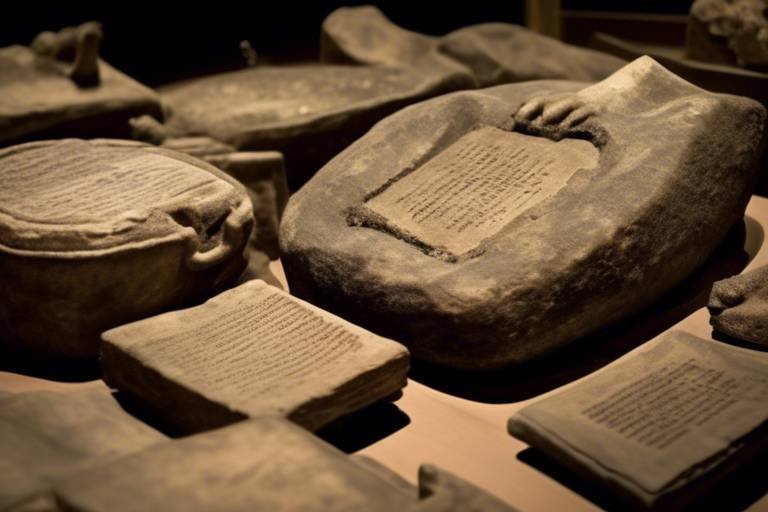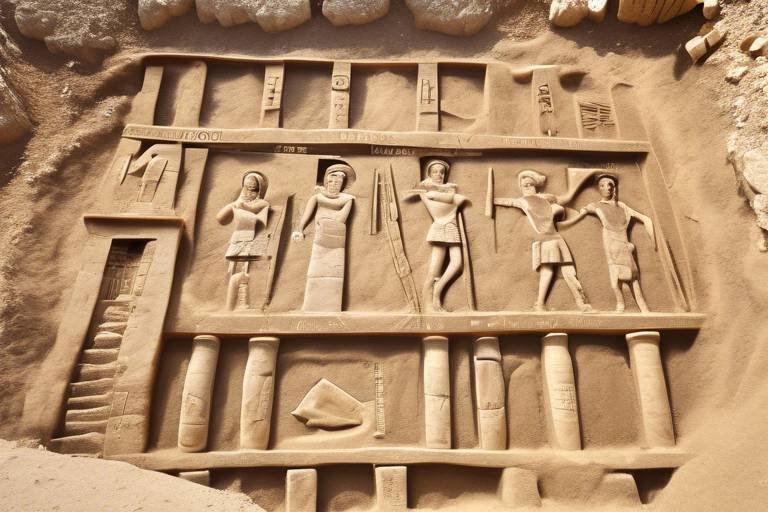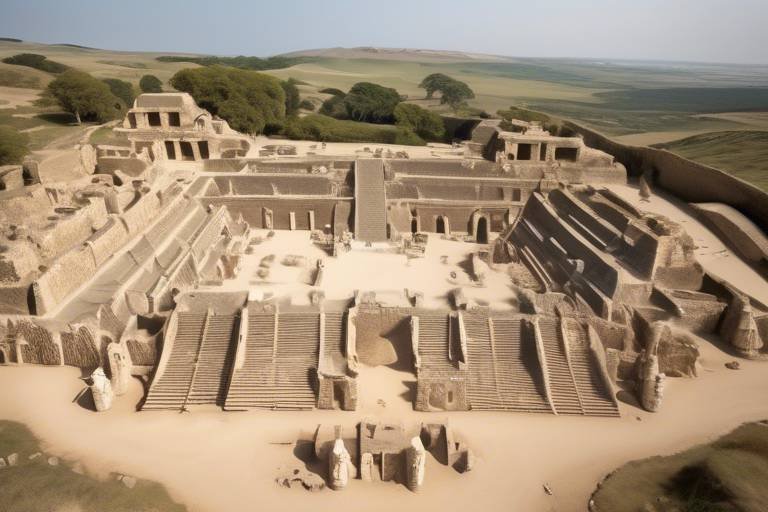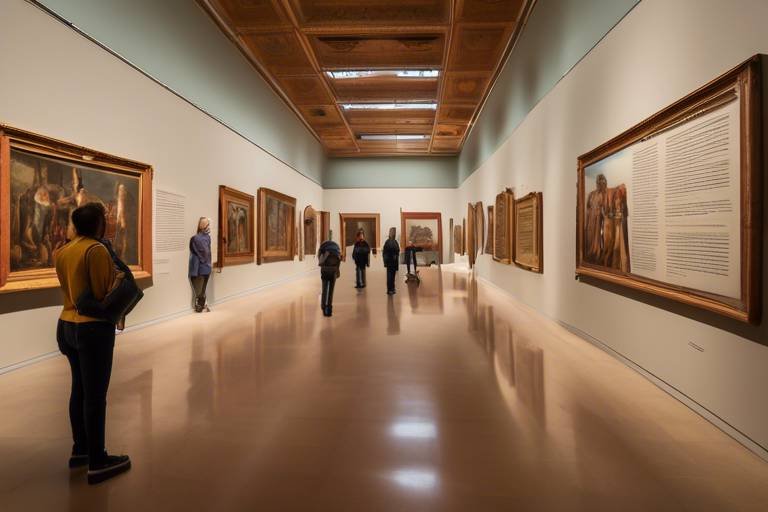Archaeological Insights into Early Christianity
Exploring the depths of history through the lens of archaeology unveils a captivating journey into the early roots of Christianity. Delving into the ancient sands and ruins, archaeologists unearth treasures that offer profound insights into the dawn of this influential faith. The excavation sites act as time machines, transporting us back to an era where beliefs were taking shape and communities were forming around a new way of life.
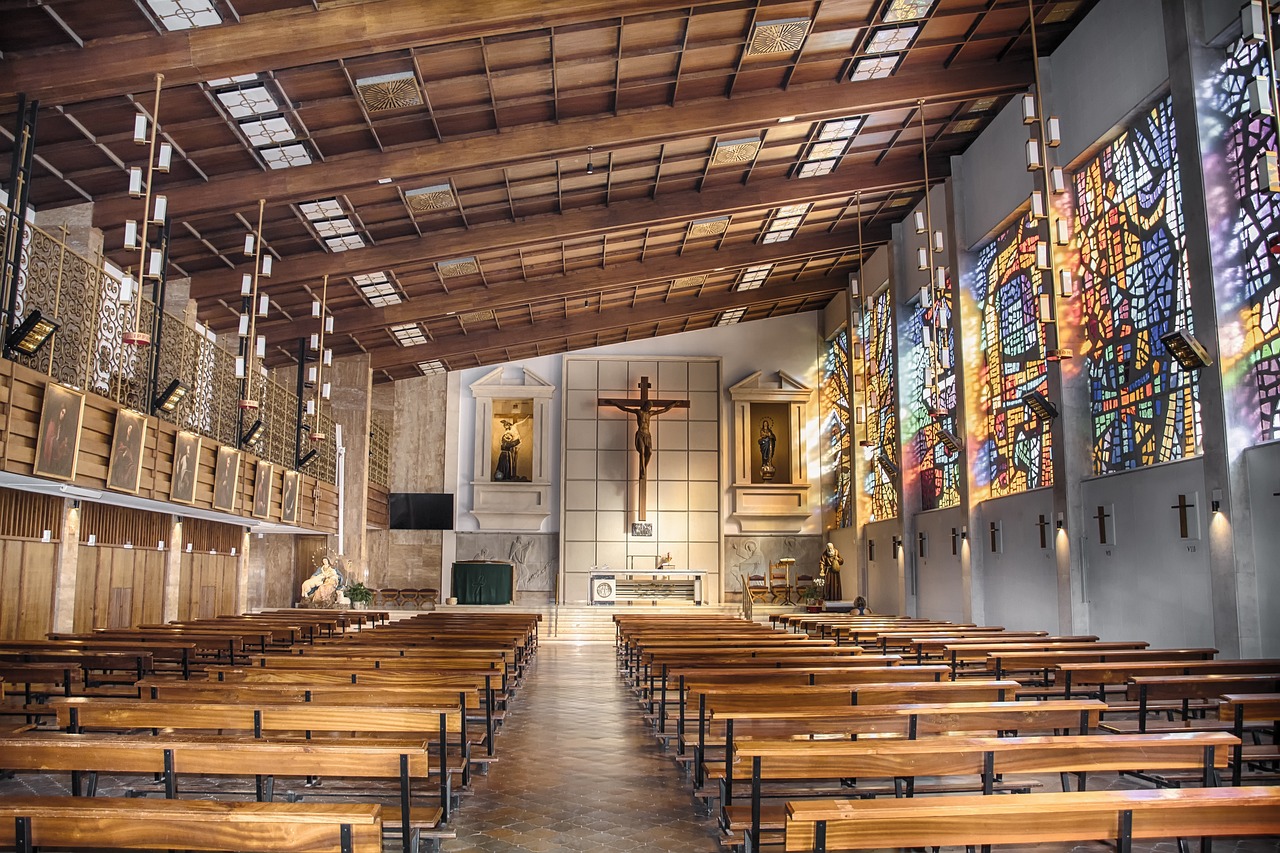
Significance of Archaeology in Understanding Early Christianity
Understanding the significance of archaeology in unraveling the mysteries of early Christianity is paramount in gaining insights into the origins and development of this influential faith. Archaeological findings serve as invaluable pieces of the historical puzzle, offering tangible evidence that complements and sometimes challenges the narratives found in ancient texts and scriptures. By delving into the material remains left behind by early Christian communities, archaeologists can piece together a more comprehensive understanding of the beliefs, practices, and social structures that characterized the early followers of Christ.

Excavations of Early Christian Sites
Excavations of early Christian sites provide invaluable insights into the practices and beliefs of the early Christian communities. Archaeologists meticulously unearth artifacts and structures that offer a glimpse into the daily lives and religious activities of the early Christians. These excavations help piece together the puzzle of how Christianity evolved in its formative years.
One notable early Christian site that has been extensively excavated is the catacombs in Rome. These underground burial chambers not only served as resting places for the deceased but also functioned as places of worship and refuge for early Christians. The intricate frescoes and inscriptions found in the catacombs depict scenes from the Bible and offer a window into the spiritual world of early Christians.
Archaeologists have also uncovered early Christian churches and basilicas in various parts of the world, such as the Church of the Holy Sepulchre in Jerusalem. These architectural marvels showcase the evolving styles and influences that shaped early Christian worship spaces. The layout and design of these churches reveal the importance of communal gatherings and rituals in early Christian communities.
Through the excavation of early Christian sites, archaeologists have unearthed a plethora of artifacts and symbols that shed light on the religious practices of the time. From intricately carved sarcophagi to symbolic motifs on pottery, these artifacts provide tangible evidence of the early Christians' devotion and beliefs. The presence of fish symbols, Chi-Rho monograms, and images of doves in archaeological finds underscores the rich symbolism embedded in early Christian faith.

Artifacts and Symbols of Early Christian Faith
Artifacts and symbols play a crucial role in unraveling the mysteries of early Christian faith. Through archaeological excavations, a treasure trove of objects has been unearthed, shedding light on the religious practices and beliefs of the early Christian communities. These artifacts provide tangible evidence of the daily lives and rituals of the early Christians, offering a glimpse into their spiritual world.
Among the most significant artifacts discovered are the fish symbol (Ichthys), which served as a secret sign of identification for early Christians during times of persecution. This symbol, often found in catacombs and on early Christian artifacts, represented the belief in Jesus Christ as the "fisher of men." Additionally, the Chi-Rho symbol, a monogram of the first two letters of the Greek word for Christ, has been found on early Christian tombs and artifacts, symbolizing the central figure of the Christian faith.
Artifacts such as oil lamps with Christian motifs, amulets with religious inscriptions, and reliquaries containing the remains of saints provide insight into the religious practices and beliefs of early Christians. These objects not only serve as tangible links to the past but also offer a glimpse into the spiritual devotion and symbolism that characterized early Christian worship.
Moreover, the early Christian catacombs themselves serve as powerful artifacts, revealing intricate frescoes, inscriptions, and symbols that depict scenes from the Bible and portray the beliefs of the early Christian community. These underground burial sites not only served as places of interment but also as sacred spaces for communal worship and remembrance.
By studying these artifacts and symbols, archaeologists and historians can piece together a more comprehensive understanding of early Christian faith, offering valuable insights into the development and spread of Christianity in its formative years.
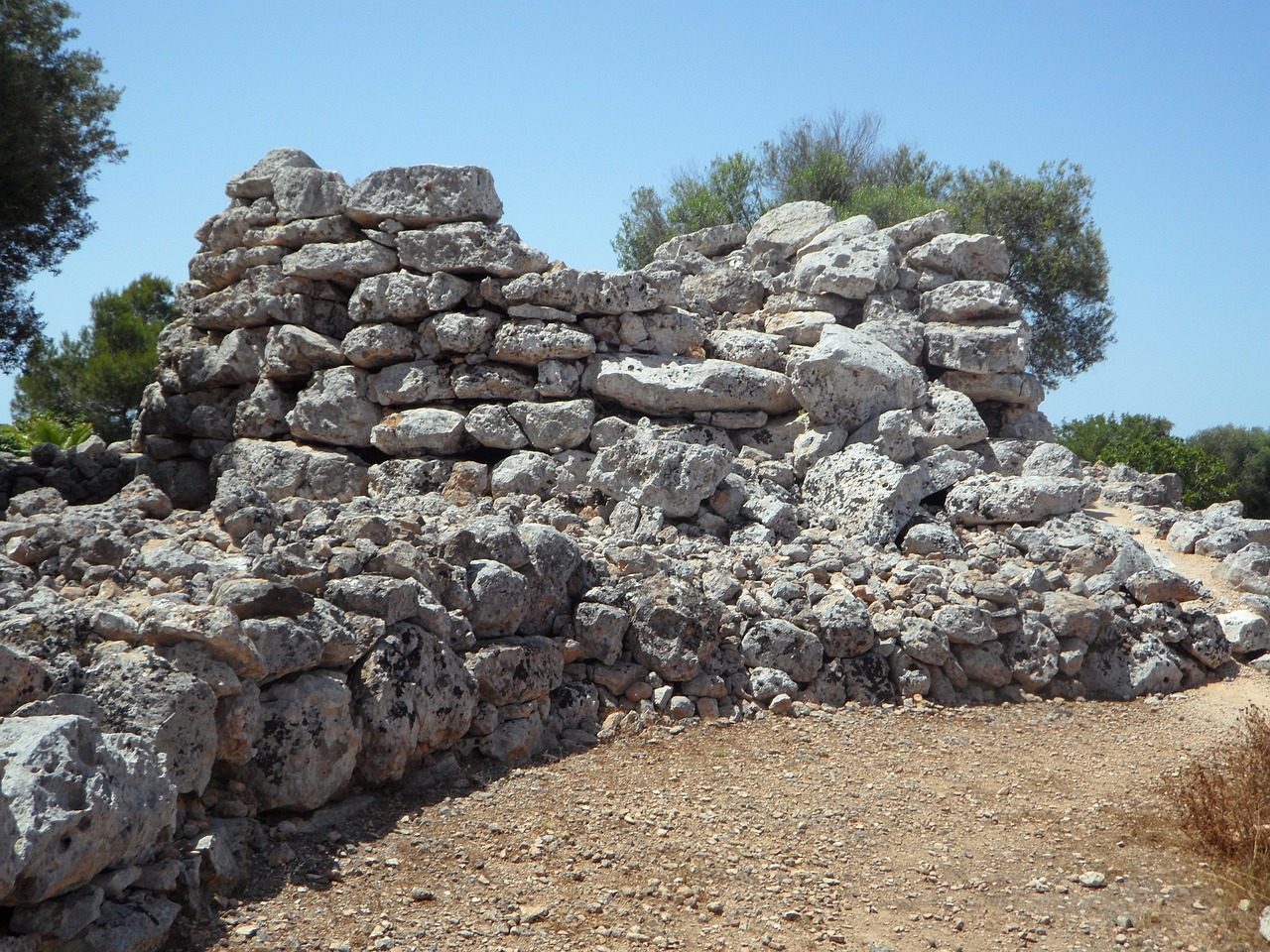
Architecture of Early Christian Churches
Early Christian churches hold a wealth of historical and architectural significance, providing insights into the evolution of Christian worship spaces. These early structures were not only places of religious gathering but also symbols of the burgeoning faith. The architecture of early Christian churches reflects the transition from secretive house churches to grand basilicas, mirroring the growth and acceptance of Christianity in the Roman world.
One of the defining features of early Christian church architecture is the basilica layout, characterized by a longitudinal design with a central nave and side aisles. This layout was influenced by Roman civic buildings and provided a spacious area for congregational gatherings and liturgical rites. The apse, located at one end of the nave, served as the focal point of the church and housed the altar, symbolizing the presence of Christ in the Eucharist.
Early Christian churches also incorporated symbolic elements into their architecture, such as the use of geometric motifs, biblical imagery, and Christian symbols like the fish and the Chi-Rho. These symbols served as visual reminders of key Christian beliefs and narratives, allowing worshippers to engage with the teachings of the faith in a tangible way.
Furthermore, the construction of early Christian churches often involved reusing materials from pagan temples and other ancient structures, reflecting a process of cultural adaptation and transformation. This practice not only provided practical benefits in terms of cost and resources but also carried symbolic meaning, signifying the Christian appropriation of the classical world.
As Christianity gained prominence and imperial patronage, the architecture of churches became more elaborate and monumental, culminating in the construction of grand basilicas like the Hagia Sophia in Constantinople. These architectural marvels not only served as places of worship but also as expressions of imperial power and religious devotion, showcasing the triumph of Christianity in the Roman Empire.
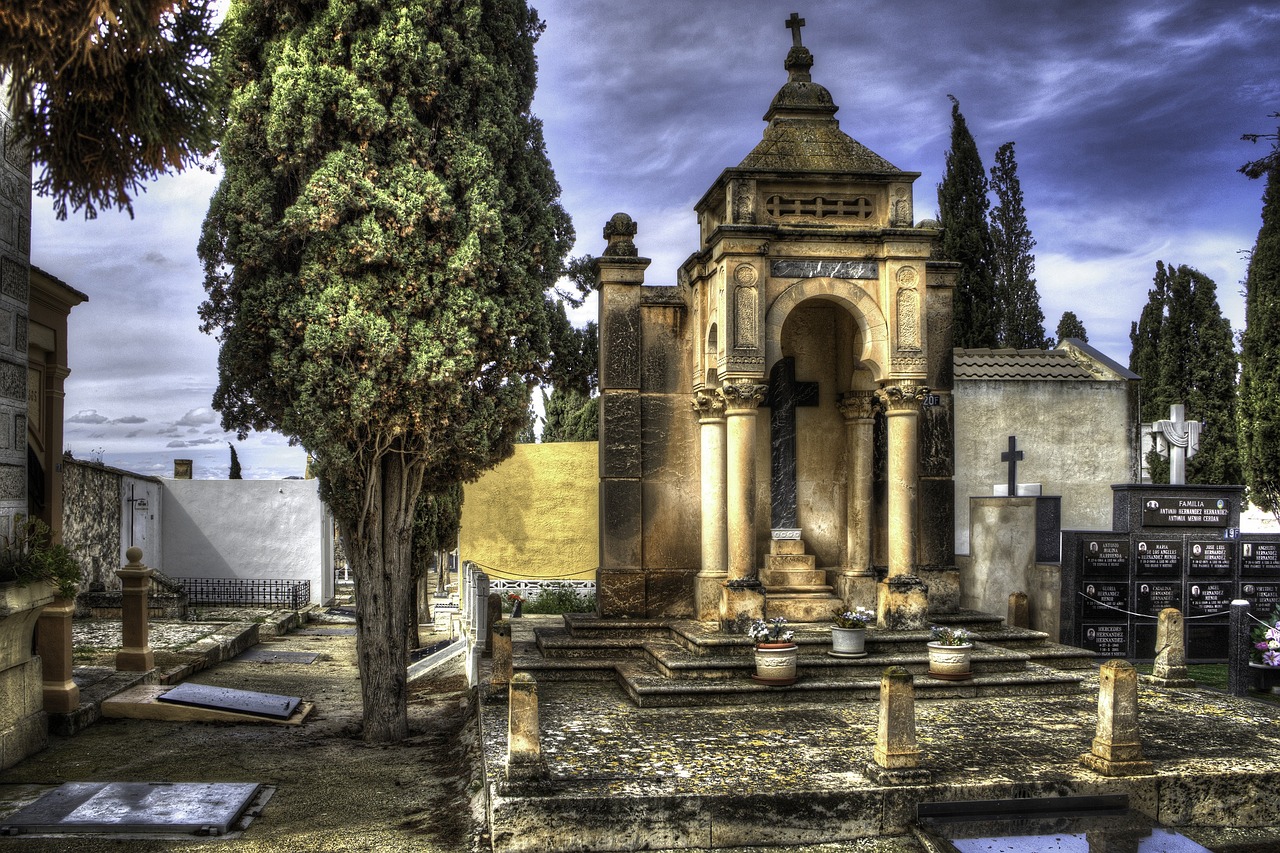
Tombs and Burial Practices of Early Christians
Tombs and burial practices provide a fascinating glimpse into the beliefs and customs of early Christians. Archaeological excavations have uncovered a variety of burial sites that offer valuable insights into how early Christian communities honored their deceased. From simple underground tombs to elaborate catacombs, these burial places reflect the reverence and care with which the early Christians treated their departed loved ones.
One of the most common burial practices among early Christians was the use of catacombs, underground burial chambers carved out of rock. These catacombs served not only as resting places for the deceased but also as meeting grounds for the living to commemorate and honor the dead. The walls of catacombs were often adorned with intricate frescoes and inscriptions, depicting scenes from the Bible and conveying messages of faith and hope.
Early Christian tombs were also marked by the presence of funerary artifacts, such as lamps, pottery, and jewelry, placed alongside the deceased as offerings for the afterlife. These objects not only provided practical use in the afterlife but also held symbolic meanings related to the Christian beliefs in resurrection and eternal life.
Furthermore, the layout and design of early Christian tombs varied depending on the region and time period. Some tombs were communal, housing multiple individuals, while others were more elaborate and reserved for prominent members of the community. The architectural features of these tombs, including the use of arches, columns, and decorative motifs, reflected the cultural influences and artistic styles of the time.
Through the study of tombs and burial practices, archaeologists have been able to reconstruct the social structure, religious beliefs, and funerary rituals of early Christian societies. These findings not only deepen our understanding of the past but also shed light on the enduring legacy of early Christianity in shaping contemporary religious practices and beliefs.

Early Christian Inscriptions and Texts
Early Christian inscriptions and texts play a crucial role in unraveling the mysteries of the past, offering valuable glimpses into the beliefs and practices of the early Christian communities. These ancient writings, etched in stone or written on papyrus, provide a direct link to the thoughts and expressions of the early Christians, shedding light on their religious fervor and cultural identity.
One of the most significant early Christian inscriptions is the Alexamenos graffito, a piece of graffiti found in the Palatine Hill in Rome. Dating back to the 3rd century AD, this crude drawing depicts a figure with the head of a donkey on a cross, accompanied by the mocking words "Alexamenos worships his god." This controversial piece of art offers insights into the ridicule faced by early Christians and their steadfast devotion in the face of persecution.
Early Christian texts, such as the Didache and the Shepherd of Hermas, provide instructions on moral conduct, church practices, and theological beliefs of the early Christian communities. These writings not only offer a glimpse into the daily lives of early Christians but also help in understanding the development of Christian doctrine and the formation of the New Testament canon.
Archaeological excavations have unearthed numerous funerary inscriptions in catacombs and burial sites, commemorating the lives of the deceased and expressing Christian hope in the resurrection. These inscriptions often include prayers, hymns, and biblical verses, reflecting the strong influence of scripture on the lives and deaths of early Christians.
The discovery of ancient manuscripts such as the Nag Hammadi Library has revolutionized our understanding of early Christian sects and their diverse theological perspectives. These texts, hidden for centuries, provide alternative views on Jesus, salvation, and the nature of God, challenging traditional narratives and enriching our knowledge of the early Christian world.
Early Christian inscriptions and texts not only serve as historical artifacts but also as windows into the spiritual and intellectual landscape of the early Church. By deciphering these ancient writings, scholars and archaeologists continue to piece together the puzzle of early Christianity, uncovering a tapestry of beliefs, practices, and controversies that shaped the faith of millions.

Iconoclasm and Destruction of Early Christian Art
Iconoclasm, a term derived from the Greek words "eikon" meaning image and "klasm" meaning to break, refers to the deliberate destruction of religious images or icons. In the context of early Christianity, iconoclasm played a significant role in shaping the development of Christian art and the interpretation of archaeological findings. The period of iconoclasm in early Christianity was marked by intense debates over the use of religious images in worship, with some factions advocating for the removal of icons due to concerns of idolatry.
The destruction of early Christian art and icons during periods of iconoclasm has posed challenges for archaeologists and historians in interpreting the visual culture of early Christian communities. The deliberate obliteration of religious imagery has left behind fragmented pieces of artwork, making it difficult to reconstruct the original context and meaning of these artifacts. Additionally, the motivations behind iconoclasm vary, ranging from theological disputes to political agendas, further complicating the analysis of destroyed artworks.
Archaeological excavations have uncovered traces of iconoclasm in early Christian sites, such as defaced frescoes, smashed statues, and scratched-out inscriptions. These physical remnants provide valuable insights into the religious controversies and power struggles that characterized the early Christian period. By studying the patterns of destruction and the contexts in which iconoclasm occurred, researchers can piece together the narratives of conflict and resistance that shaped early Christian art and religious practices.
Despite the challenges posed by iconoclasm, archaeologists and art historians have developed innovative methods to reconstruct and interpret the fragmented remains of early Christian art. Through comparative analysis, digital reconstruction, and interdisciplinary collaboration, scholars continue to unravel the complexities of iconoclasm and its impact on the visual culture of early Christianity. By engaging with the material traces of destruction, researchers can uncover hidden layers of meaning and symbolism embedded in the surviving artifacts, shedding light on the dynamic interplay between image, belief, and power in the early Christian world.

Trade and Spread of Early Christian Ideas
When exploring the trade and spread of early Christian ideas, it becomes evident that the movement of people and goods played a crucial role in the dissemination of these beliefs. Trade routes served as conduits for not only merchandise but also for the exchange of cultural and religious concepts. The interconnectedness of the ancient world facilitated the transmission of Christian teachings across regions and continents, contributing to the rapid expansion of the faith.
Early Christian communities leveraged trade networks to share their beliefs with diverse populations, adapting their message to resonate with local customs and traditions. As merchants and travelers traversed the Mediterranean and beyond, they carried with them not only goods for commerce but also the seeds of Christianity, planting them in new territories and sowing the foundation for future Christian communities.
Archaeological evidence, such as inscriptions on ancient artifacts and the presence of Christian symbols in distant lands, attests to the far-reaching impact of trade on the spread of early Christian ideas. The discovery of early Christian churches in port cities and trading hubs underscores the strategic placement of religious centers along trade routes, facilitating the integration of Christianity into the fabric of society.
Moreover, the exchange of ideas through trade routes fostered a dynamic cultural environment where different religious beliefs intersected and influenced one another. The syncretism of traditions and the blending of diverse spiritual practices enriched the tapestry of early Christianity, shaping its development and fostering a sense of interconnectedness among believers across vast geographical distances.
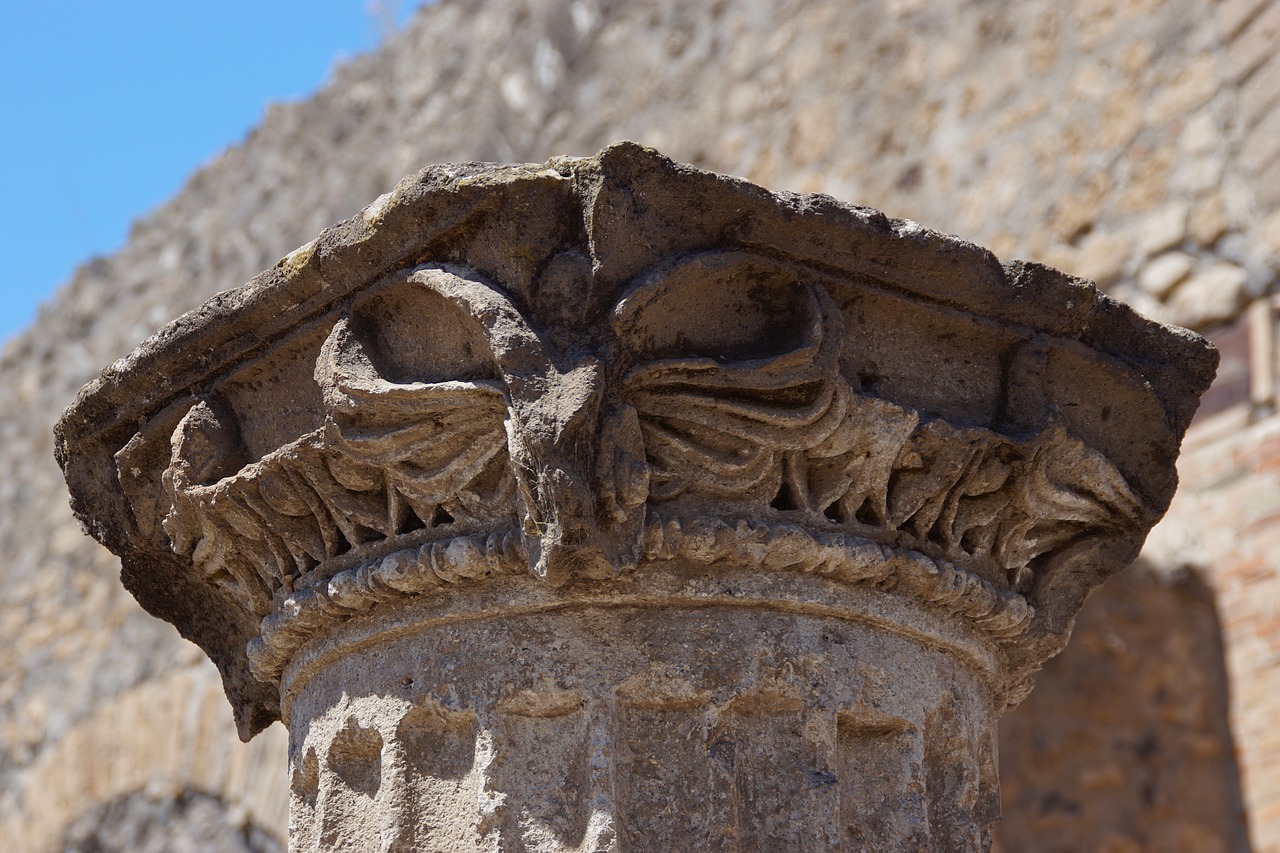
Challenges and Controversies in Interpreting Early Christian Archaeology
Interpreting early Christian archaeology poses various challenges and controversies that researchers and scholars grapple with. One significant challenge is the limited availability of direct historical records from the early Christian period, leading to a heavy reliance on archaeological findings for insights. This reliance on material evidence can sometimes result in differing interpretations and debates regarding the religious practices and beliefs of early Christian communities.
Furthermore, the interpretation of early Christian artifacts and symbols can be contentious due to the diverse cultural influences present in the ancient Mediterranean world. The blending of various traditions and the evolution of Christian iconography over time can make it challenging to pinpoint the origins and meanings of certain symbols found in archaeological contexts.
Another controversy in early Christian archaeology revolves around the authenticity and provenance of artifacts and inscriptions. The trade of antiquities and the prevalence of forgeries in the market have raised concerns about the reliability of some archaeological discoveries. Scholars must navigate these issues carefully to ensure the accuracy and integrity of their interpretations.
The biases of archaeologists and historians also present a significant challenge in interpreting early Christian archaeology. Preconceived notions and personal beliefs can influence the way evidence is analyzed and conclusions are drawn, leading to potential inaccuracies in the reconstruction of early Christian history. It is essential for researchers to remain aware of their biases and approach the material with objectivity.
Moreover, controversies arise in the interpretation of early Christian inscriptions and texts, particularly regarding the translation and decipherment of ancient languages. The nuances of language and the context in which these texts were written can impact their meaning, contributing to scholarly debates and differing interpretations of early Christian beliefs and practices.
In conclusion, while early Christian archaeology provides invaluable insights into the formative years of Christianity, it is not without its challenges and controversies. Navigating these complexities requires a multidisciplinary approach, critical analysis of evidence, and a willingness to engage in scholarly debate to further our understanding of early Christian history.
Frequently Asked Questions
- What is the significance of archaeology in understanding early Christianity?
Archaeology plays a crucial role in providing tangible evidence and context for the origins and development of early Christian communities. By uncovering artifacts, inscriptions, and architectural remains, archaeologists offer valuable insights into the beliefs, practices, and daily lives of early Christians.
- What are some common artifacts and symbols of early Christian faith?
Common artifacts and symbols of early Christian faith include fish symbols, catacombs, chi-rho symbols, early Christian inscriptions, and bread and wine motifs. These archaeological discoveries help us understand the religious practices and iconography of the early Christian period.
- How do early Christian inscriptions and texts contribute to our understanding of the past?
Early Christian inscriptions and texts found in archaeological contexts provide valuable information about the beliefs, rituals, and social structures of early Christian communities. By deciphering these texts, scholars can reconstruct aspects of early Christian life and theology.
- What challenges are involved in interpreting early Christian archaeology?
Interpreting early Christian archaeology poses challenges such as bias in historical accounts, authenticity of artifacts, and the complex nature of ancient burial practices. Scholars must navigate these complexities to gain a comprehensive understanding of early Christianity.









